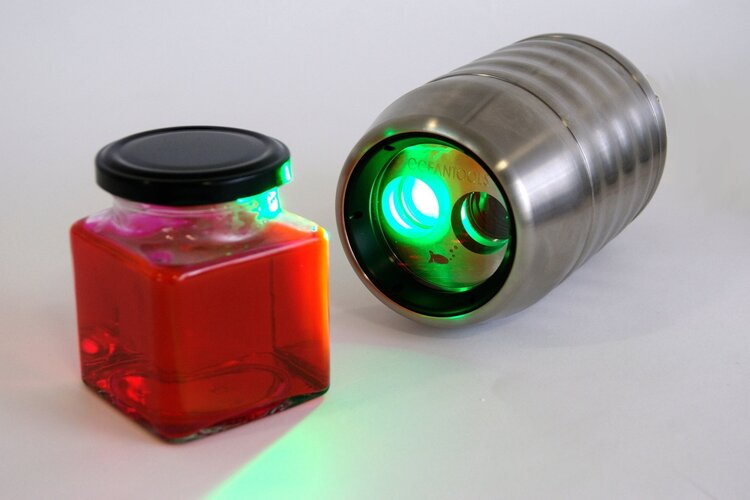Underwater fluorescent dye detector
Our cutting-edge technology is specifically designed for Ocean Tools and provides unparalleled precision. We are revolutionising dye detection by pushing the boundaries of accuracy and reliability. Our system incorporates high-intensity LED lights that stimulate optimal molecular activity and fluorescence in fluids and cement with ease. With exceptional sensitivity, our state-of-the-art optical multipliers can detect even the faintest presence of individual photons of light, surpassing human visual perception by 100 times. Our electronics can be easily integrated into underwater enclosures, rovers, and handheld devices, enabling them to realise their full potential.
Features
Exceptional Sensitivity
Early detection of leaks and spills
versatile integration
Advanced Illumination
Underwater focused
Adjustable sensitivity and precision
Subsea leak detection
Subsea operators can effectively prevent leaks and ensure regulatory compliance with our underwater sensor. Housed in a suitable underwater casing and combined with a fluorescent dye, this sensor provides early warning in underwater environments, allowing operators to mitigate any environmental impact.
Environmental Monitoring
When it comes to environmental science and monitoring, the use of low-light sensors is crucial. These sensors have the ability to identify and measure low-intensity light emissions from a variety of sources. This can include bioluminescent organisms residing in oceans, low-level chemical reactions, or even pollution indicators such as algae blooms. With their advanced capabilities, low-light sensors play an integral role in detecting and tracking important environmental factors.
Biological and Medical Research
Low light sensors play a vital role in detecting faint bioluminescent or chemiluminescent reactions that are frequently studied in the fields of biochemistry and molecular biology. These sensors are also highly effective in spectrophotometers for analyzing low-intensity light signals. Their versatility and precision make them an essential tool in laboratory equipment.
